Natural and forced ventilation in the apartment: how to
It is quite clear why ventilation in the apartment is needed - if there is no good ventilation, then damp air begins to accumulate in the house, condensate, and unpleasant odors appear. And because of the dampness, in turn, the wallpaper moves away from the walls, wooden elements rot, etc.
Therefore, we can safely say that an effective ventilation system in the apartment is the key to a comfortable microclimate and durability of the finish.
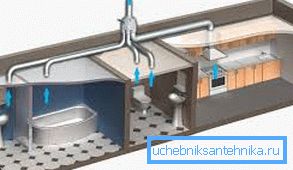
In this article we will look at two points:
- How to check and restore natural ventilation.
- How and from what to make forced ventilation.
After studying this information, you can do it yourself.
Let's start.
Work with natural extracts
The very first thing you can do is bring a piece of paper to each vent. If the paper is deflected in the direction of the mine, then with a natural hood, you are fine.

But if deviations are not observed or they are weak, then this is already a problem.
Advice: it is not recommended to check the draft with the help of a match flame, because gas can form inside the channel and contact with fire here can lead to an explosion.
We are trying to find a solution:
- We open the windows, doors and check the draft again - if the paper is sucked into the hole, then the whole reason for poor ventilation is that the air flow is weak.
- If the result remains the same, then it is not a matter of the tributary, but the fact that the mines are simply stuffed with something, littered.
In the first case, the solution is quite easy - you just need to open the windows for airing as often as possible. In addition, you can increase the height of the cracks between interior doors and the floor.
Tip: to increase the flow of air and with the help of a supply device - this is a pipe, the edges of which are closed by a special valve. This pipe is mounted directly inside the wall, usually above radiators. One edge of the product goes into the street, and the second is in the room.
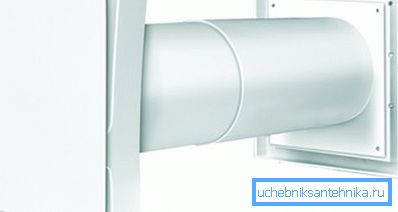
But the restoration of ventilation in the apartment, that is, cleaning the channels - will require great effort. There will have to work with a brush or flexible wire - with their help, all large debris is removed. And small particles can be cleaned with a vacuum cleaner.
In the same cases, when the site is littered in a vertical shaft, and you cannot reach it - you can safely apply for cleaning the mine in the housing office (this work is their responsibility).

In general, the ventilation norms in an apartment are determined very simply - according to the rules, at least two air exchange cycles per hour should occur. A sign that everything is in order is the absence of stale and damp air.
If you see that in winter time the temperature in the room is below 18 degrees (with normal heaters), this means that the ventilation power is excessive.
However, it often happens that the examination of ventilation in the apartment showed that everything is in order, the canals are not clogged, but there is clearly not enough fresh air. This means that the system is normal, but simply can not cope with the load - this happens, for example, when the kitchen is used very often, the bathroom is constantly loaded, etc.
Here in this situation it is very important to install forced hoods. Let's look at how this is done.
Installation of ventilation devices
First you need to figure out where installation of additional devices is most often required and why.
| Type of room: | How relevant is the installation here: |
| In principle, the installation of additional devices does not make much sense, because in such sectors there are no sources of moisture. It is easier to regularly ventilate through the windows, air vents. |
| An extra hood in the kitchen is simply a must if constant cooking is done. If food odors penetrate into other rooms, then the conclusion is unequivocal - natural thrust is not enough. |
| In such rooms, the default humidity is excessive. If you see that there is condensation on the walls or other signs of disturbing the microclimate, then do not hesitate to organize the ventilation, even if the price of the project is rather big. This is the case when the work pays off - because you maintain the integrity of the finish. |
Such are the recommendations.
Pay attention to one simple formula - multiply the volume of the room in cubic meters by the so-called multiplicity and we obtain the optimal power parameters of the fan needed in this case. For bathrooms and kitchens, the multiplicity is usually 6-10. Now you know how to calculate the ventilation in the apartment.

With theory finished - go to practice. "Walk" for each room separately and in detail.
Restroom
In principle, any axial fan is suitable for this room. The essence of his work lies in the fact that he, as it were, enhances the rate at which air exits a room outside through a vertical shaft.

Installation instructions here are very simple.
- Dismantle the old ventilation grille.
- We clean the hole - we remove all the dust, excess ledges, nails, dowels, etc.
- We put in a niche fan.
- We bring to him the wiring. It turns out that one end of the cable comes to the fan, and the other is connected to a separate switch. The principle is the same as when connecting an ordinary chandelier.

If the toilet is standard - that is, with a small area, then the axial device should "cope" and improve ventilation.
We go further.
Bathroom
In this room, of course, the area is usually larger, and the humidity level is higher than in the toilets. Therefore, the installation of axial fans here if it is relevant, then only those that have good power.
A better option is a radial hood that has the shape of a cochlea. In such a device was originally built a more powerful motor that can handle much more air than the previous product.
Besides the radial device differs in smaller power consumption and more silent noise level. This is possible due to the fact that the air flow during "suction" immediately goes up through the central channel.
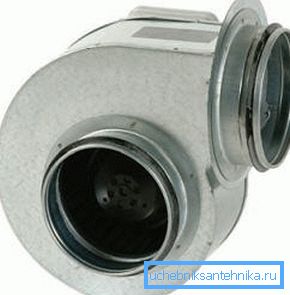
As for the installation - the scheme is identical to how the axial device is assembled.
In general, it turns out that the installation of ventilation in the apartment is not very difficult. The main thing is to understand the principle of operation of this or that system, and any person will be able to install an installer with its installation.
Now let's talk about such a difficult room as the kitchen.
What is better to install in the kitchen
The difficulty is that the kitchens have a relatively large area. Therefore, one fan here is unlikely to manage.
In general, here you can do it radically - install forced-air ventilation.
It is arranged like this:
- The engine is mounted on the balcony or loggia (either in the attic or above the ceiling), which will draw in air from the room, and back to “supply” fresh air.
- The central air ducts of flexible metal or of galvanized steel ducts are mounted parallel to each other between the hinged and draft ceilings. According to them, the air will be drawn out and “delivered” back.
- Sleeves are connected to the central air ducts, the other end of which fits to the ventilation holes in the ceiling. Of course, there should be several openings in one room.
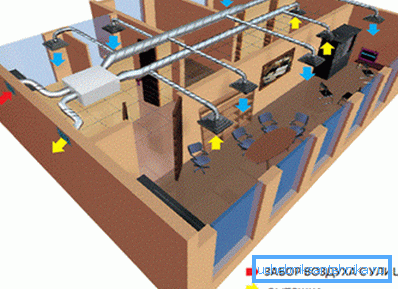
Here the plus is that the same engine will be able to air all the rooms of the apartment, and not just one room. Well, the minus is, of course, that such ventilation options in the apartment are quite expensive.
If the financial capabilities are not so good, then you can mount a good radial-type fan and additionally put a powerful hood over the stove. The frame of the hood is simply attached to the wall or to the furniture, and the sleeve goes from it to the vent grid.
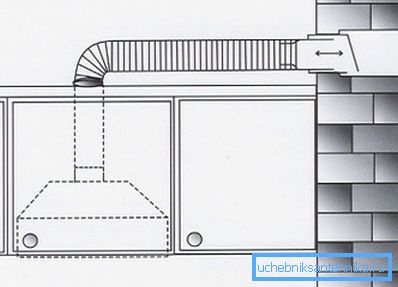
These are the recommendations.
This concludes our article - let's summarize the review.
Conclusion
As you can see, additional ventilation in the apartment is arranged quite simply - it is quite possible to do everything on your own. As for the restoration of the system with a natural burden, the scheme of action, we have considered.
If there was little information on these topics, then check out the video in this article.